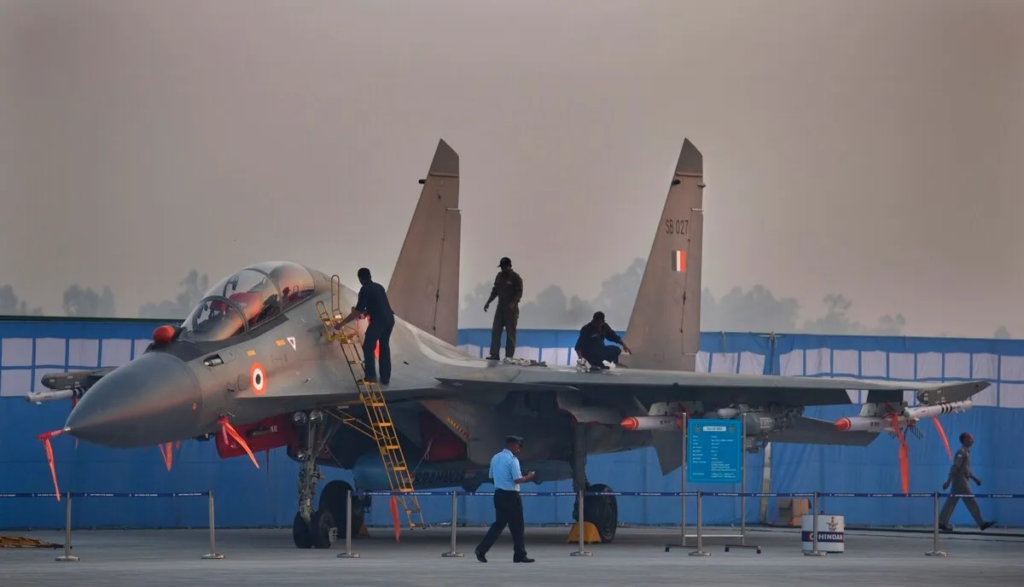The Indian Air Force plans to phase Upgrade Su-30MKI Fleet. The focus will be Integration of Indigenous Technologies for Enhanced Capabilities AESA radar integration will be the most important sensor integration.
The Indian Air Force (IAF) has started a significant modernization journey, aiming to upgrade its fleet of Su-30MKI aircraft in a phased manner. With 259 Su-30MKIs currently in service, the first phase will see 80 of these fighter jets receiving state-of-the-art enhancements, marking a pivotal step in bolstering India’s aerial combat capabilities.
Initially, the plan was to upgrade the Su-30MKI fleet with technology derived from the Sukhoi Su-57, a fifth-generation fighter jet. This strategy was aligned with India’s earlier aspirations to co-develop and produce the Su-57. However, after leaving FGFA and with the advent of the Tejas Mk1A and Mk2 programs, India saw the emergence of cutting-edge technologies developed domestically. These home-grown advancements have now been optimized for integration into the Su-30MKI, showcasing India’s growing self-reliance in defense technology.
The Role of Active Electronically Scanned Array (AESA) Radar
One of the most critical upgrades in modernizing the Su-30MKI is the integration of the Active Electronically Scanned Array (AESA) radar. AESA radars are transformative sensors that can elevate a fourth-generation fighter to near fourth-and-a-half-generation capabilities. The IAF’s first batch of Su-30MKIs is set to receive the indigenous AESA radar, a testament to India’s advancing radar technology.
Desi AESA: A Scalable Radar Solution
Uttam AESA radar, initially developed for the Tejas Mk1A, has proven to be a versatile and scalable solution. It can be optimized for various fighter aircraft, including the Su-30MKI. In the first phase of the upgrade, 80 Su-30MKIs will be equipped with this advanced radar system, significantly enhancing their operational effectiveness.
Manufacturing Partnership and Production
The Defence Research and Development Organisation (DRDO)’s laboratory, LRDE (Electronics and Radar Development Establishment), has issued an Expression of Interest (EOI) for partners to manufacture the Uttam AESA radar based on DRDO’s design. This initiative will likely see manufacturing contracts awarded to either Astra Microwave or Bharat Electronics Limited (BEL), both of whom have the technical expertise and facilities to produce these radars. The selection will be based on the lowest price (L1) offered by the vendors, ensuring cost-effectiveness while maintaining high standards of quality.
Implications for the IAF and Future Prospects
The upgrade of the Su-30MKI fleet comes at a critical time. The Tejas Mk1A program faces delays due to issues with the General Electric (GE) engines, placing additional pressure on the IAF to maintain and enhance its current fleet. The successful upgrade of the Su-30MKIs with the AESA radar and other indigenous technologies will not only improve the aircraft’s combat readiness but also reinforce India’s commitment to self-reliance in defense.
This phased upgrade represents a significant stride in the IAF’s modernization efforts, leveraging home-grown technologies to ensure that India’s aerial defense capabilities remain robust and cutting-edge. As the upgrade program progresses, it will be crucial to monitor the performance and integration of these new systems, paving the way for further advancements in India’s defense aviation sector.
